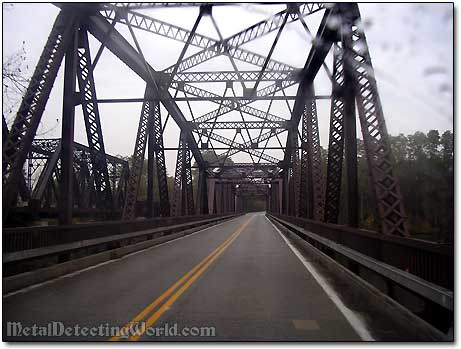Treasure Hunting with Rodney (Story 7) - Erie Canal, Schoharie Dam
A big part of the local history belongs to the Erie Canal that passes along the north town line. The Erie Canal runs through Montgomery County parallel to the NYS Thruway. On a picture below is a bicycle path running along the partially water-filled ditch, a portion of the original 1822 canal. The ditch, which was 40-feet-wide by 4-feet-deep, successfully connected the Hudson River to Lake Erie.
Bicycle Path Along the Erie Canal's Remains
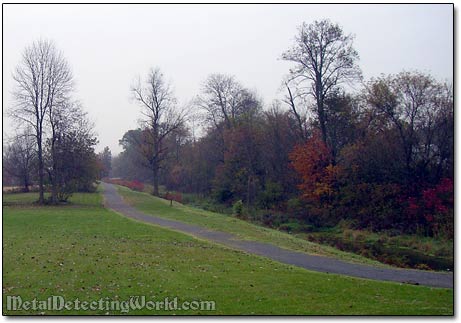
Construction of the Erie Canal began July 4, 1817, in Rome, New York, about 60 miles to the west. The canal was dug in two directions at the same time, west toward Buffalo and east toward Albany. As soon as a section was finished, it was opened to navigation. The section between the Schoharie Creek and Schenectady opened in 1822.
The original Canal was 363 miles (584 km) long, from Albany on the Hudson river to Buffalo, on Lake Erie, and was dug 40 feet wide (28 feet wide at the base) and 4 feet deep with a mule towpath, generally on the north side of the ditch. The sidewalls of the canal were lined with stone set in clay, and the bottom was also lined with clay. For the stonework, hundreds of German masons were employed, later they built many of New York's famous buildings.
The completion of the Erie Canal in 1825 marked the beginning of a new chapter in American history. The Erie Canal had the distinction of being the longest artificial waterway in the world. It was traversed by 300 bridges and viaducts. Over 80 locks, each measuring 90-feet long by 15-feet wide, were built to make up the 565-foot elevation difference between Lake Erie and Hudson river. The canal cut shipping costs to Lake Erie by 95%. It also simplified and reduced the difficulties of westward settler migration.
Building the canal cost over $7 million, but by 1835, the tolls collected paid off that debt. The astounding achievements of the Erie Canal set off an era of canal construction "mania" throughout the United States.
The Erie Canal Lock 1 in Waterford, NY, in 1915
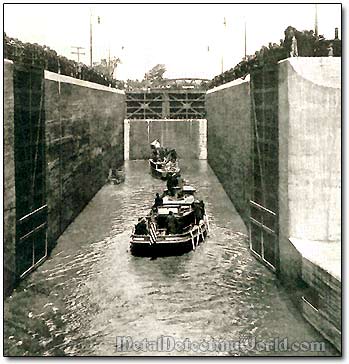
The original Erie Canal crossed the Schoharie creek because its builders wanted to use the bridge which spanned the creek at this point. A dam was built across the creek to raise the water level and create a pool of calm water. When a barge reached the creek, the draft animals crossed on the bridge and towed the barge across the pool.
Schoharie Creek Bridge Still in Place
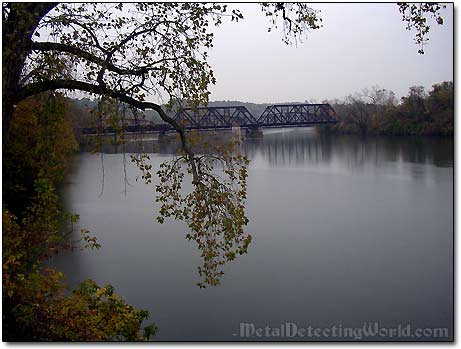
Although only one dam was in use here at any given time, several dams were built throughout the 19th century to replace those constantly being destroyed by ice and flood waters of the Schoharie Creek which could be anything but calm. It was not unusual for a boat to be swept over the dam if its captain dared crossing when the water was too high. The last Schoharie dam was built in 1894. It was lengthened, modified, and repaired several times after that.
The Last Schoharie Dam in 1890s
(Courtesy of the Montgomery County Department of History and Archives.)
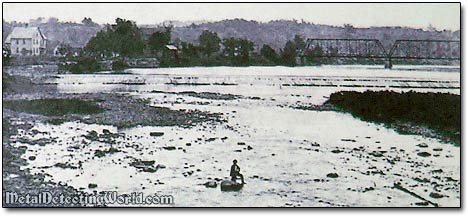
The Erie Canal became so successful that it could not accommodate the traffic demands. One lock near Schenectady recorded over 30,000 lock-through's in 1832. Because its locks were all single-chambered, boats could only go through each lock one at a time. Crossing the Schoharie Creek presented another challenge: whenever it flooded, traffic remained at a standstill.
The Bridge is Still in Great Shape
